How elections work in
Wisconsin
Thousands of Wisconsinites work tirelessly to make sure your ballot can safely and securely become a vote.
Learn more about what goes into every step of this process.


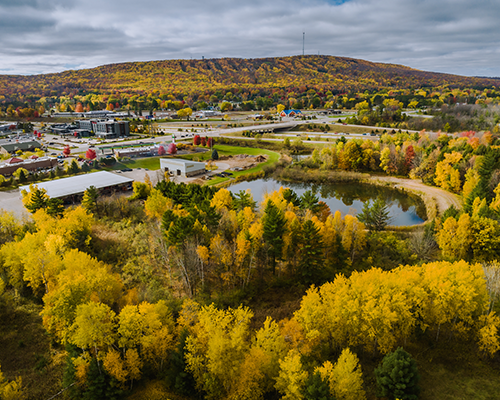
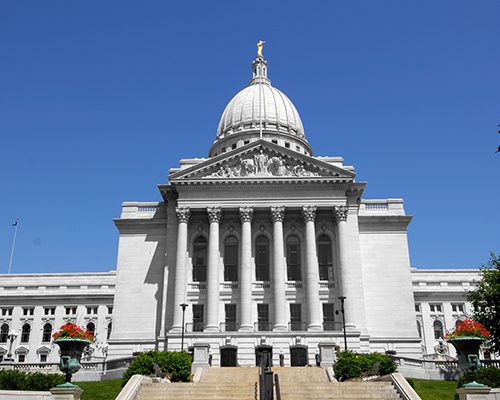



1
WHO RUNS WISCONSIN ELECTIONS?

Elections in Wisconsin are run locally by our state’s 72 county clerks, more than 1,800 municipal clerks, and more than 12,000 Wisconsinites who serve as poll workers. These thousands of officials work—with support and oversight from the state—to ensure Wisconsin’s elections are safe, secure, and accurate.
These public servants are Republicans, Democrats, and independents who live in your community. They are also your neighbors, and across the state they include supporters of every candidate on the ballot. They put aside partisan preferences and work together to ensure that each election runs smoothly, and that each and every vote is secure and counted accurately.
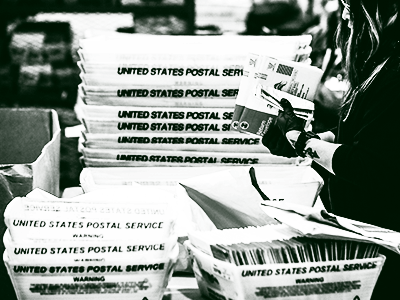
2
WHO CAN VOTE?


In order to legally vote in elections in Wisconsin, you must be:
- A U.S. citizen
- 18 years or older on Election Day
- A resident of Wisconsin at least 28 days before the election, except you can vote for President if you have been a resident for fewer days
- Registered to vote or are registering on Election Day
- Note: People convicted of felonies are not qualified to vote until they have completed their term of imprisonment or otherwise satisfied their sentence
Election officials perform regular reviews to make sure each voter on the rolls meets these qualifications.
Get more information on where, when, and how to vote in Wisconsin elections here.
Like most states, Wisconsin routinely removes deceased voters from the voter rolls using information from sources including the Wisconsin Department of Health Services (DHS), Social Security Administration records, and death records. Wisconsin also obtains death information from the Electronic Registration Information Center (ERIC), an interstate database. Election officials compare all of this information with voter registration records to make sure all voter registration statuses are up to date.
In Wisconsin, like in all states, only U.S. citizens can vote in state or federal elections.
There are multiple safeguards to prevent non-citizens from voting. When anyone registers to vote, the Wisconsin Election Commission checks their driver’s license or state ID card. If they don’t have one, WEC uses Help America Vote Act (HAVA) data – including info from the Wisconsin Department of Transportation and Social Security Administration – to check a voter’s citizenship status.
It is against the law for non-citizens to vote in state or federal elections in Wisconsin, and there are strict processes and multiple safeguards in place to make sure the law is followed.
Students who are 18 years of age or older on election day may vote in Wisconsin if:
- they have lived in a specific Wisconsin election ward (a defined area within a city, town, or municipality) for at least 28 days before the election;
- are a U.S. citizen; and
- are not otherwise disqualified by state or federal law (for example, by actively serving a sentence after being convicted of a felony).
The 28 day residency requirement does not require a student voter to remain or sleep at that residence for 28 straight days before being eligible to vote there. A student voter can spend part or all of the next 28 days at a different address on a temporary basis and still vote from the new address, so long as it is where they reside.
To be considered a resident under state law, students don’t have to intend to remain permanently at their registered voting residence. What matters is whether, when they register,, their listed address is the student’s home to the exclusion of other places. The student won’t lose residency for voting purposes if they leave (or have left) their residence with the intent to return – for example, during summer, winter, and spring breaks, or vacations, or visits to family).
More in-depth information regarding the residency requirement and specific scenarios for students can be found here.
Once an eligible voter meets the residency requirement and registers to vote, they are able to vote in the 2024 general election. And don’t forget, Wisconsin allows people to register on Election Day itself!
For more about where, when, and how to register, you can go here.
Photo ID is required to vote in Wisconsin. Acceptable photo ID includes:
- a Wisconsin DOT-issued driver’s license/ID card,
- a military ID card,
- a U.S. passport,
- an ID card issued by a federally recognized native tribe in Wisconsin,
- and a photo ID card issued by a Wisconsin accredited university or college that includes:
- a date of issuance,
- the student’s signature,
- an expiration no later than 2 years after the date of issuance (if the card expires before the most recent general election, that is okay). If the school ID is expired, the student must also provide a separate document that proves current enrollment.
A full list of acceptable photo IDs can be found here.
Primary elections: Wisconsin is an open primary state. That means you don’t need to be officially registered with a political party to vote in its primary. However, each voter can only participate in one party’s primary in any given election. In other words, if you are an independent, you can choose to vote in either Republican or Democratic primaries, but not both.
General elections: In elections that are not party primaries—like the general election in November—all registered voters are eligible to cast a ballot, and can vote for candidates of any political party up and down their ballot.
Local, county, statewide, and federal elections can take place at different times of the year. Information on upcoming Wisconsin elections can be found here.
3
HOW DOES WISCONSIN PREPARE FOR ELECTIONS?

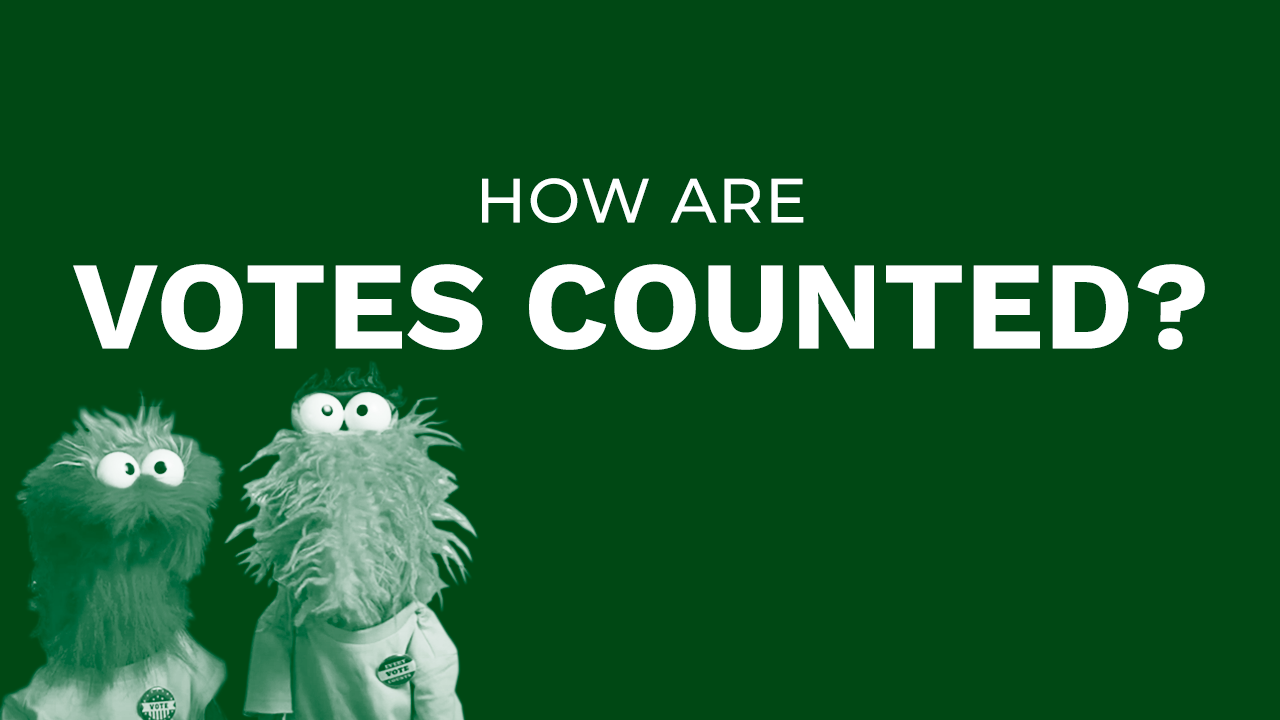
In the months leading up to Election Day, Wisconsin’s election officials hire and train thousands of local election workers, prepare polling places, and rigorously test voting machines to make sure they work properly.
These officials also determine locations for polling places and secure drop boxes. There are more than 2,400 polling places spread across the state’s 72 counties.
Before each election, election officials safely store, test, and seal each voting machine to make sure it is secure. Much of this testing process is open to the public.
4
HOW DO YOU GET & CAST A BALLOT?

Wisconsin law requires that every vote cast has a paper record, so that there is a verifiable source of each and every vote.
There are three ways to vote in Wisconsin:
Absentee Ballot
Early In Person Ballot
You can vote early in person beginning on March 18, 2025, 14 days before Election Day on April 1.
To vote this way, go to the clerk’s office and request, fill out, and then return an absentee ballot directly to the clerk.
Election Day Ballot
If you decide to vote absentee, there are three ways you can return your ballot. You can return your ballot:
By Mail
Via Secure Drop Box
Municipalities in Wisconsin can decide to use secure ballot return sites or “drop boxes”.
All ballot drop boxes must be set up, maintained, secured, and emptied by the local clerk.
Drop boxes may close before in-person voting locations on Election Day.
Be sure to check with your local county election board
for drop box locations and hours of operation.
In-Person
You can vote early in person beginning on March 18, 2025 , 14 days before Election Day on April 1. Early voting locations are typically listed on your local election clerk’s website.
Absentee ballots requested by mail can also be returned in person to your polling place on Election Day. Your municipal clerk may also offer other ways to return your absentee ballot in person.
Regular in person ballots can be cast on Election Day at your designated polling place.
In Wisconsin, it’s up to each community’s local election officials to decide whether to make secure ballot drop boxes available for voters to deposit their completed absentee ballots. The Wisconsin Elections Commission developed guidance regarding best practices for drop box security, including that drop boxes in Wisconsin should be securely locked and only able to be opened by election officials, permanently affixed to the ground or the side of the building, and placed in public, well-lit areas with good visibility.
Drop boxes have been used in Wisconsin for decades to ensure a free and fair election. The Wisconsin Supreme Court recently reinstated their use.
Only the local election clerk may set up and empty the ballots from the drop box to transport them to the counting facility where they will be processed and counted.
All Wisconsin ballots are protected by verifying signatures, tracking barcodes, and maintaining a strict chain of custody, starting when the ballots are deposited in a drop box.
5
HOW ARE BALLOTS KEPT SECURE?

Wisconsin uses approved, certified voting machines that are routinely tested and maintained to ensure they provide accurate results.These machines are not connected to the internet.

All ballots in Wisconsin are subject to chain of custody requirements, which means nonpartisan election officials are legally required to monitor and track every ballot through each stage of the process. This includes ballots that arrive by mail as well as those cast in person.
Where drop boxes are in use, local election officials regularly collect absentee ballots from the secure drop box locations. They follow strict security procedures in collecting and transferring them to the local election board or the ballot counting facility.
Completed absentee ballots mailed by voters to their local election board are securely stored until they are processed and tabulated. Afterwards, they are stored in a secure facility for at least 22 months.
Ballots voted in person at polling places are transferred to secure containers, safely transported to the local election board, and stored for at least 22 months.
Absentee voting has been used in the United States and Wisconsin since the Civil War and has a long history of being safe and secure. To keep absentee ballots in Wisconsin secure, voters are required to have a witness sign their ballot envelope, whether they return the ballot by mail or in person. Mailed absentee ballots can be tracked from when they are sent to voters until they are counted.
6
HOW DO I KNOW VOTES ARE COUNTED ACCURATELY?

Bipartisan teams of election inspectors oversee vote counting. After counting is finished, a bipartisan group of election officials in your city or town – and then in your county – review the results. Additionally, election observers from both major political parties and civic groups frequently observe ballot processing and tabulation.
Ballot tabulation machines are used to count ballots and tabulate the final results. In Wisconsin, counties and municipalities are not allowed to process or tabulate absentee ballots before Election Day. That process takes time, which means that election results are often not finalized on election night. In fact, it can take more than a week after the election to complete the process.
Preliminary results announced on election night come from different counties and municipalities at different times as they work through the counting process. And some votes might not be included yet. For example, overseas and military votes usually are not counted by election night. So election night results are not yet official or fully complete. Likewise, projections or exit polls about election outcomes made by the media are also not official. Only the final, state-certified results of Wisconsin elections are official for federal and statewide elections.
All votes in Wisconsin have a paper record, which means that results can be audited and each ballot can be examined if needed.
Depending on the type of election, Wisconsin elections offices conduct certain kinds of post-election audits to verify that the election was conducted correctly and followed state law. This includes a requirement that ballots be randomly audited against machine counts to ensure accuracy.
Additionally, full recounts in large Wisconsin counties like Milwaukee and Dane in 2020 and statewide in 2016 have also demonstrated that prior election results were accurate. An audit of the November 2024 election found that not a single vote was counted incorrectly, altered, or missed by Wisconsin tabulation machines.
In Wisconsin, the timeline for counting and reporting votes is a little different from most other states.
In our decentralized system, every state sets its own processes for running elections. So every state has slightly different rules for when mail or absentee ballots must be received and when they can be processed or counted. Wisconsin’s election laws and processes mean that it’s unlikely we will know the results of the 2024 election on election night, especially in a close race.
Why? Wisconsin is different from many states because state law does not permit pre-processing of absentee ballots. That means election workers in Wisconsin may not begin processing absentee ballots until 7 AM on Election Day. Once they start, each absentee ballot can take several minutes to process. There are hundreds of thousands of absentee ballots set to be cast in this election, and it will take considerable time to count them all.
In 2020, nearly two million absentee votes were cast. It took one day after the election for counties to complete the vote counting process before a presidential winner for the state could be declared.
What is pre-processing?
Pre-processing allows election workers to remove absentee ballots from their envelopes before Election Day to confirm the ballot is eligible to be counted. Pre-processing significantly reduces the time it takes to tabulate and finalize the vote count. In 2024, the Wisconsin State Senate decided not to allow pre-processing of absentee ballots in the state for the 2024 presidential election.

7
HOW ARE RESULTS VERIFIED?

Wisconsin election results for federal and state-wide races do not become official until they’ve been triple-checked—first by local, then county, then state election officials.
On Election Day, local election officials and election inspectors tally votes at polling places and in designated counting locations. This process is frequently observed by members of the general public and both major political parties. After counting, the “unofficial” results are posted by each county as required by law.
The results are then certified at the county level by county election officials and a board comprised of the county clerk and at least one member of the general public from the opposite political party. The results are then delivered to the Wisconsin Elections Commission no later than 14 days after the election. At this point, they are still unofficial and will remain so until the state verifies them.
There are no automatic recounts in Wisconsin, but they may be requested by candidates or members of the general public under certain circumstances.
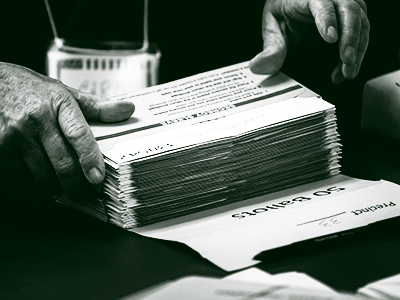
In a statewide race, if the difference in votes between the top two candidates is less than 1% of the total votes cast, the trailing candidate may request a recount.
Members of the general public may request recounts in referendum elections, but not candidate elections.
For state and federal elections, county boards of canvassers conduct the recounts at the local level.
Any candidate, their representatives, or members of the general public are permitted to observe the proceedings.
FREQUENTLY ASKED QUESTIONS
You may still have questions about how elections work in Wisconsin!
Here are some of the most common:
There are a variety of trusted and reliable sources of information about Wisconsin elections, voting, and results.
The Wisconsin Elections Commission has up-to-date information on how to vote, information on election security, and a helpful Elections FAQ page.
Your local clerk’s office is also a great place to go to with any questions. Many elections offices maintain up-to-date websites and social media accounts to keep voters informed. You can also call them with specific questions. To find your local elections office, click here.
Trusted local news sources like your local or regional newspaper, radio, or TV station may also have up-to-date information about what’s going on with elections near you.
In this day and age, this is, unfortunately, an important question. False information about voting and elections can easily spread online and on social media, so it’s always good to take a moment to consider the accuracy of any stories or claims you see.
Thankfully, the Wisconsin Elections Commission has up-to-date information on how to vote, information on election security, and a helpful Elections FAQ page. Your local clerk is also a good source (find yours here).
This website provides a lot of easy to read, factual information about every step of the elections process in Wisconsin – who can vote, how to vote, how votes are counted, and how the process is kept secure.
Before you share or act on something you’ve read online, make sure the place you saw it is credible, verified, and has been backed up or supported by additional trusted sources.
There are clues and tools to help you hone your sense of whether what you’re reading online can be trusted.
Fraud in elections is extremely rare. Claims of significant fraud in the 2020 election have been investigated repeatedly. No evidence has been found to support those claims.
During the Trump administration, the Department of Justice, led by Attorney General Bill Barr, investigated claims of widespread fraud in the 2020 election and found no evidence to support them. No claims of substantial election fraud have survived legal scrutiny. Many claims of fraud have been dismissed as meritless by Trump-appointed judges.
A robust, nonpartisan review of the 2020 election in Wisconsin revealed the results were accurate and there was no widespread voter fraud. Sen. Robert Cowles (R-Green Bay) who co-chairs the Legislature’s audit committee said, “This audit showed us that the election was largely safe and secure” and “The [Legislative Audit Bureau] has been well-respected as a nonpartisan agency by both sides of the aisle & by their colleagues around the US.”
An audit of Wisconsin voting machines for the 2022 midterms found that the state’s voting machines counted ballots accurately. The bipartisan Wisconsin Elections Commission unanimously signed off on the audit’s results. “I think the results of this audit are remarkable,” said Republican commission member Bob Spindell. “And should give confidence to the people [of] Wisconsin that these machines work properly.”
Even experts hired by the Trump campaign to identify instances of voter fraud in the 2020 election did not find fraud that would have changed the results. The handful of instances of inappropriate votes that they found were split across both parties.
Incorrect information about elections can spread quickly. You might see false information in a text message, on social media, or elsewhere online. You might even get it through a phone call.
If you see false information about where, when, or how to vote or register to vote, it is a good idea to alert trusted officials.
Intentionally deceiving qualified voters to prevent them from voting is a crime. It is also a state crime to publish false information about people running for office that may impact how voters vote. If you see clearly false information, you can report it to:
Wisconsin elections are run by people from our communities along with trusted election officials whose years of expertise ensure that our state’s elections system works—by the people and for the people. Each polling place where voting machines are used must have at least five “inspectors” who help run the election. Those five inspectors are chosen from lists provided by each of the two major political parties. If a party does not create a list, then the inspectors can be appointed without regard to party. (Inspectors have to be qualified voters in the county in which they will serve). As a result, all elections are overseen by a bipartisan group of workers.
If you are interested in getting involved in the election process, there are several things you can do. They include:
- Register to vote and cast your ballot.
- Sign up to be a poll worker or inspector in your city or town.
- Volunteer with your local political party or other qualified organization to be a poll observer. In every election in Wisconsin, both major political parties appoint observers who are trained in state election laws.